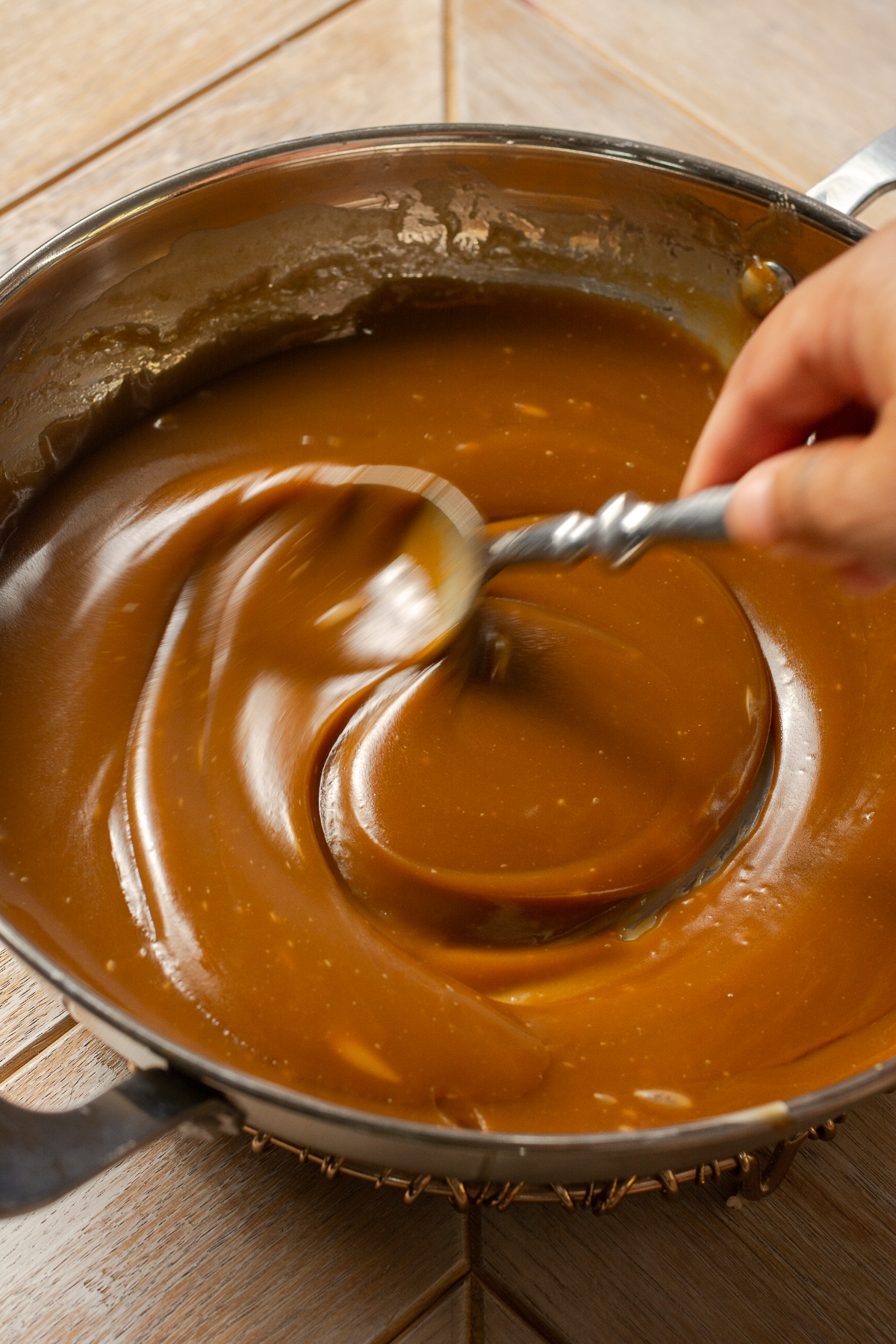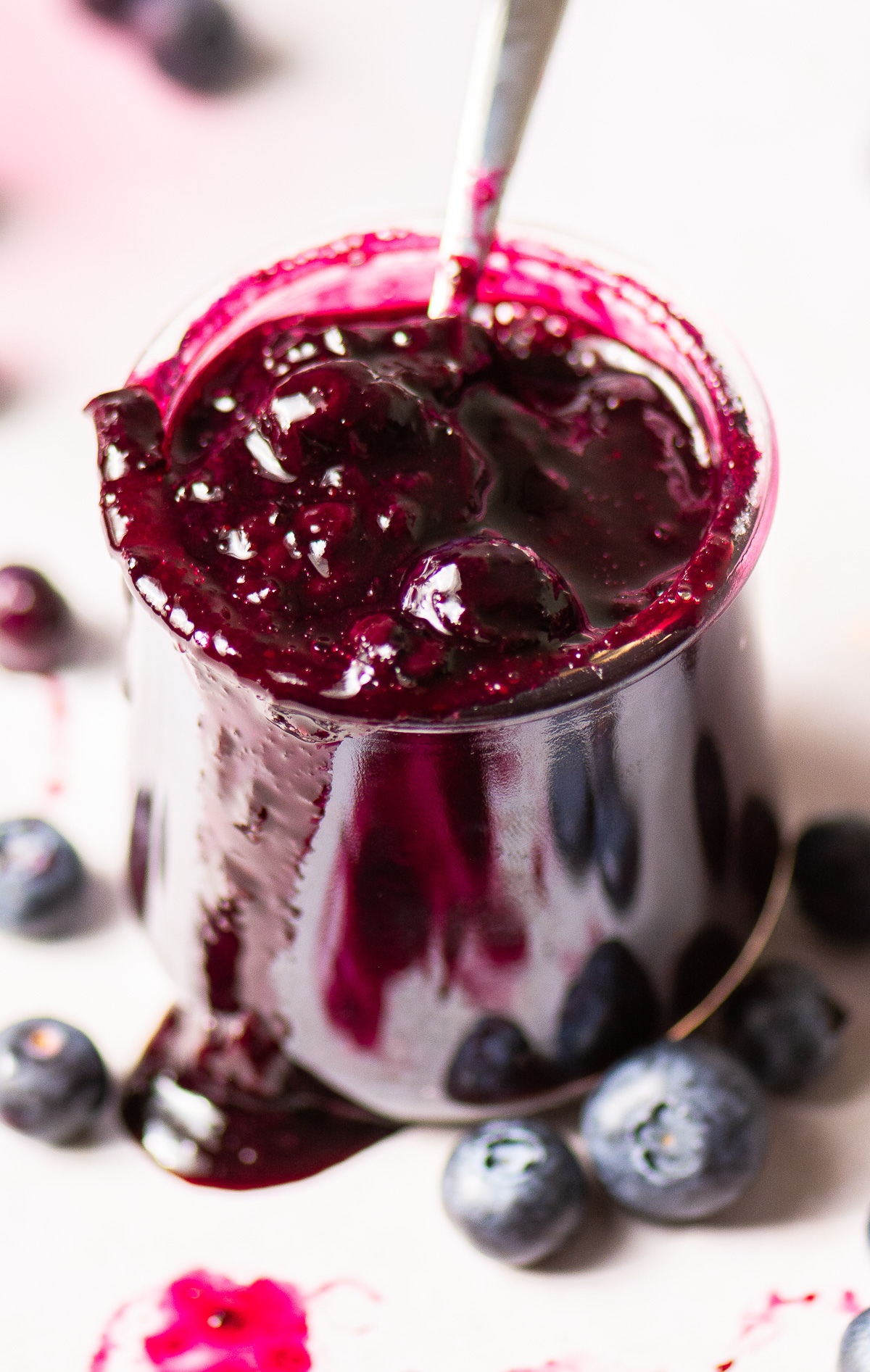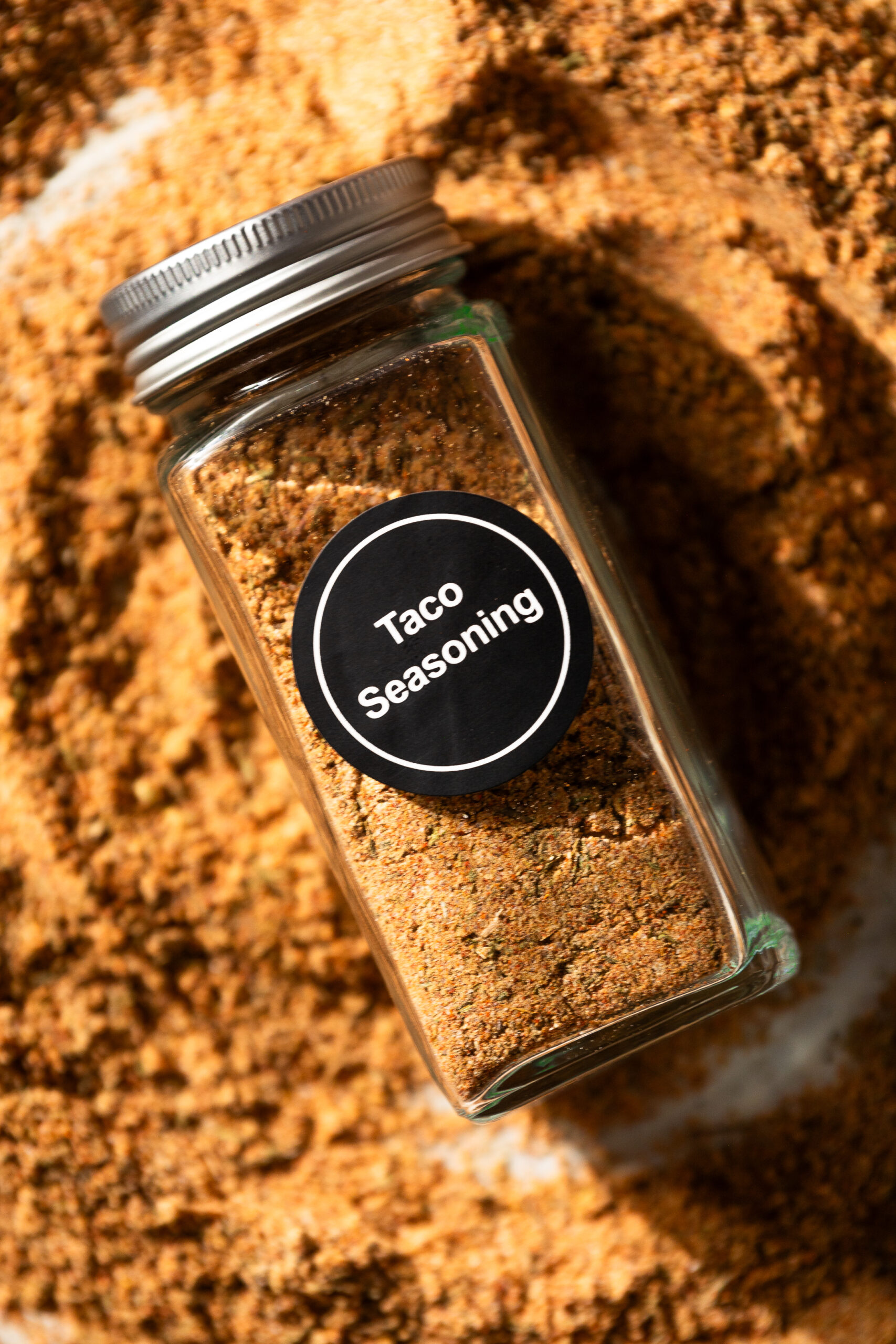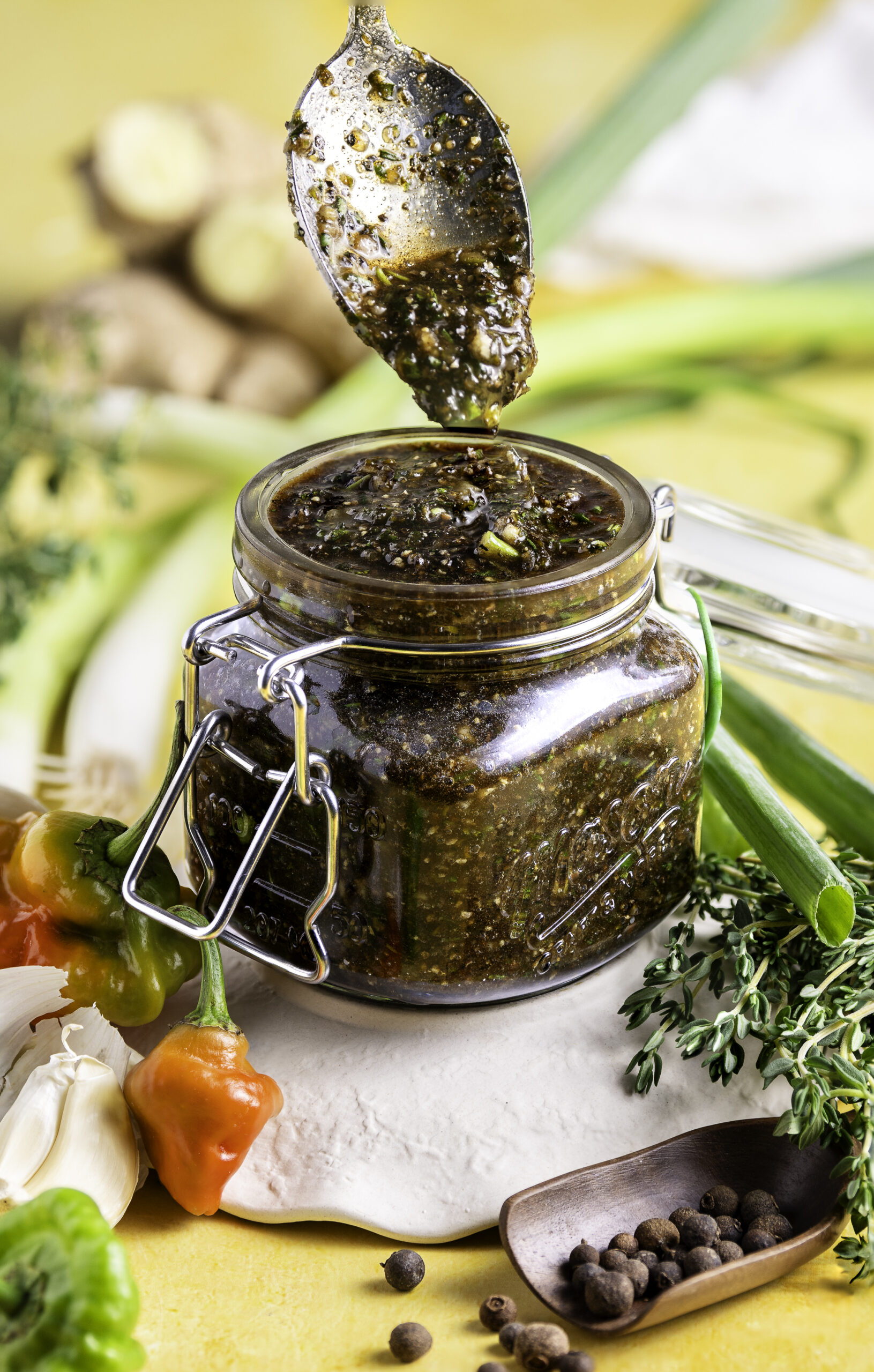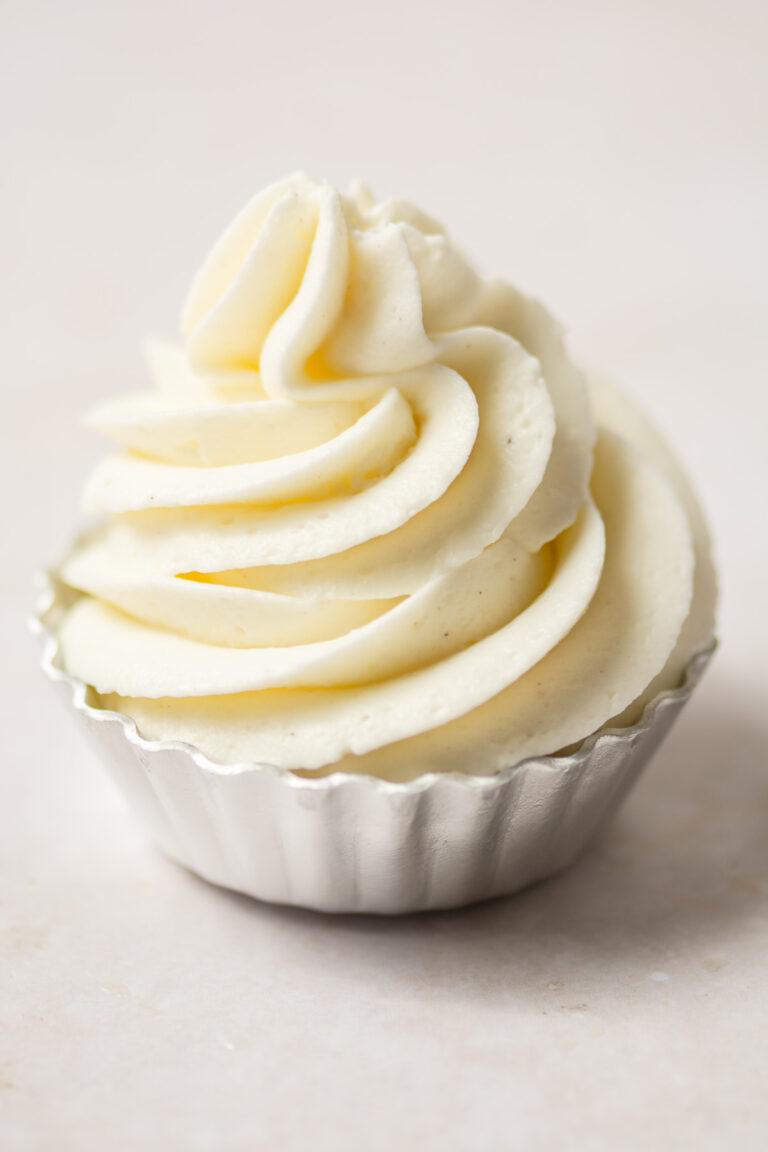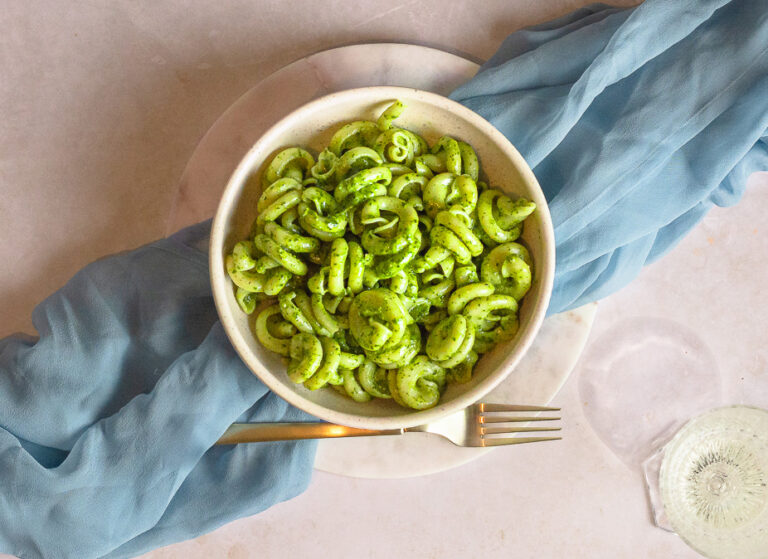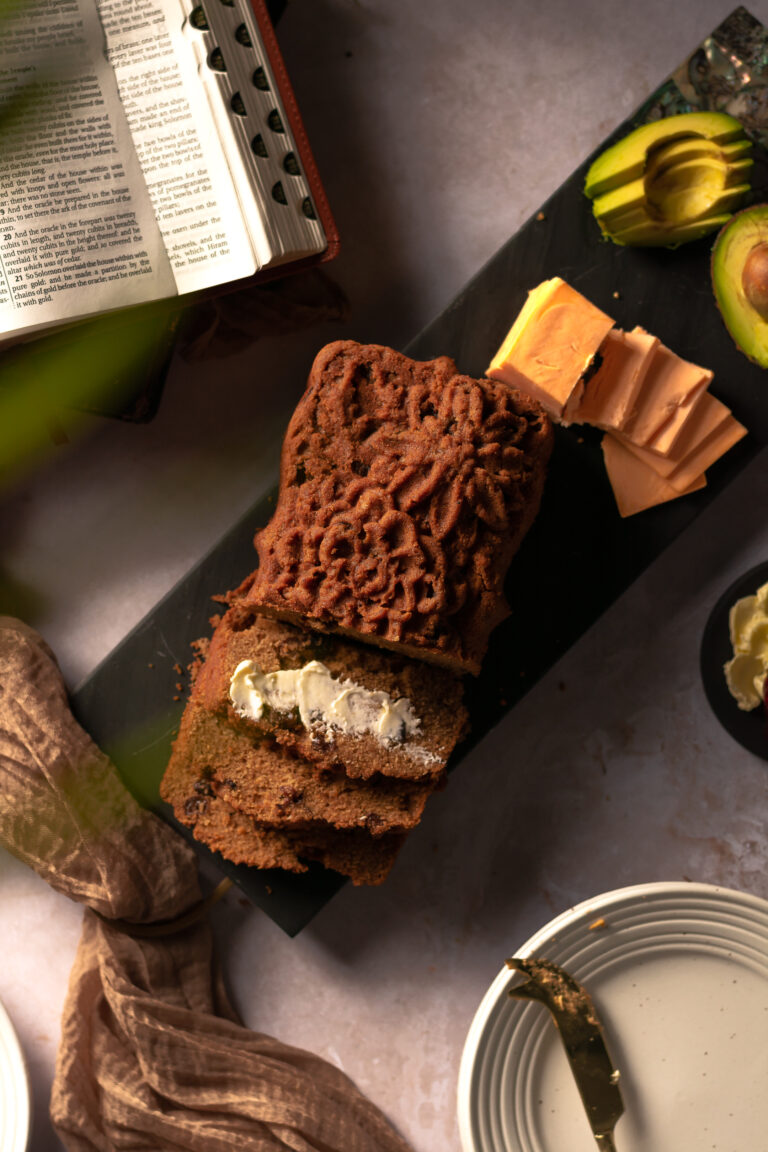Homemade Classic Basil Pesto Recipe
If you've ever been let down by a dull, oily store-bought pesto, this homemade classic basil pesto for you! It's bold, vibrant, and packed with flavor thanks to a quick blanching step that locks in that gorgeous bright green color and keeps your sauce tasting fresh even after a few days in the fridge. It might not be traditional in method per sè since we ditch the mortar and pestle, but this classic basil pesto recipe is one of my favorite things to keep on hand! Whether you have a thriving basil plant or just picked up a bunch of fresh basil leaves, this recipe transforms simple ingredients into a fresh basil pesto that’s next-level.
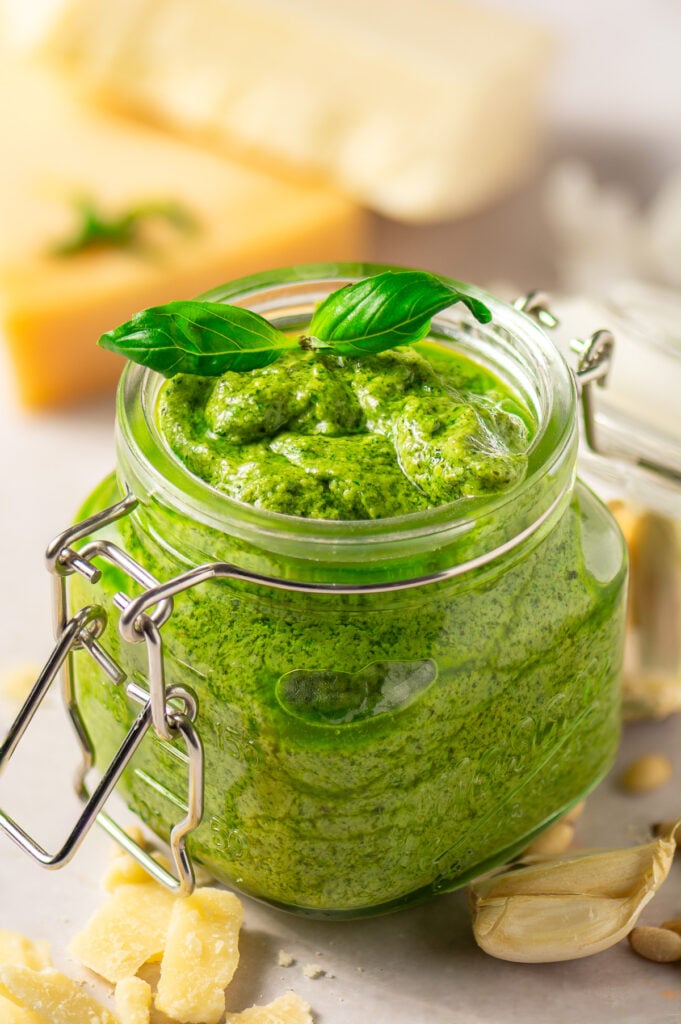
Save this recipe for later!
The buttery pine nuts, aged cheeses, and fragrant basil blend into a smooth, vibrant & versatile sauce you’ll want to dollop on everything from sandwiches and homemade pizza to fresh pasta like this crab pesto pappardelle. If you're really looking to jazz up a dish try throwing it in with your favorite pasta salad! Once you try this homemade basil pesto for the first time, any jar you find in grocery stores just won’t cut it.
What is pesto sauce?
Pesto is a sauce made by grinding basil and pine nuts with olive oil, cheese (usually parmesan) and garlic. "Pesto" comes from the Italian word "pestare" which means "to pound." While a traditional pesto is made with a mortar & pestle, this version uses a high-powered blender which, in addition to a couple ice cubes, helps to preserve the bright green color and the flavor of the pesto even a week after the pesto is made!
Key Ingredients
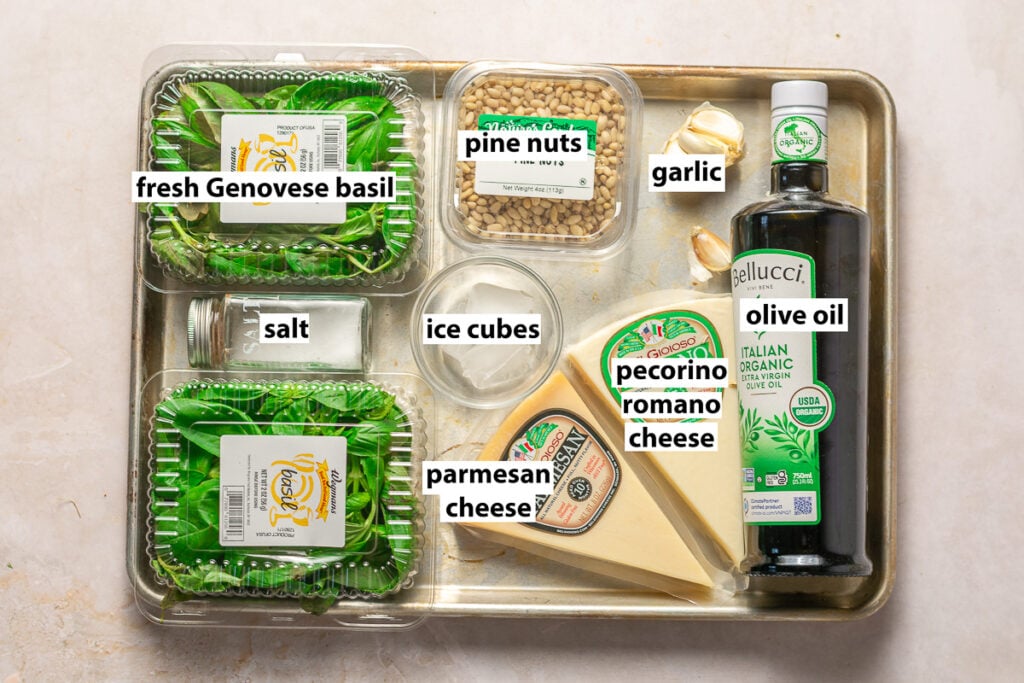
Genovese basil. Genovese basil tends to have the most potent flavor and is the classic choice for a true Italian pesto taste. Sweet basil (also known as American basil) is a good substitute. Don't substitute Genovese basil for Thai basil, holy basil or purple basil as these have completely different flavor profiles and will not give you an Italian pesto sauce.
Pine nuts. A mild-flavored buttery nut that helps to give the pesto it's creamy texture. Don't leave it out as it also helps with the emulsification of the sauce, ensuring that the pesto doesn't just separate out into oil. If you have a nut allergy, seeds like sunflower seeds may be a good alternative.
Parmesan cheese. Classic option in pesto. It has a sharp taste melts well despite being a firmer, aged cheese making it perfect for pesto - especially when used in hot dishes like on pizza or in pasta! Parmigiano reggiano is a very specific type of parmesan produced in a specific part of Italy under strict guidelines and regulations. Parmigiano reggiano tends to have a richer flavor more in line with a true Italian experience.
Pecorino Romano cheese. A firm cheese with a tangy flavor traditionally made from sheep's milk. Romano is a good substitute but it has a milder flavor and is made from cow's milk in most cases.
Olive oil. I use extra virgin olive oil for the most flavor. Unfortunately in the US many products marketed as olive oil are not actually pure olive oil. To know a good quality olive oil make sure it has a harvest date listed on the label. The olive oil should also only have a single origin.
Garlic. Vampires don't like it but you will! Complements the basil and cheese perfectly.
Ice cubes. Not used in a traditional pesto but a couple cubes of ice added to a high-speed blender helps to prevent the sauce from heating up which is what ultimately causes a separated sauce.
Tips for the Best Homemade Classic Basil Pesto Sauce
Blanch the basil leaves! This is the key to preserving the vibrant green color of a classic basil pesto. Cooking the basil briefly will brighten the natural color. Submerging it in cold water immediately after cooking will deactivate the enzymes responsible for browning. This pesto keeps for a 5-7 days in the refrigerator and the color is just as vibrant as day 1 thanks to blanching unlike many store-bought versions.
Don't skip the ice cubes! Ice cubes aren't part of a traditional Italian pesto recipe but it will help in emulsifying the pesto. In general, molecules are more loosely packed at high temperature. On the other hand, maintaining a cool sauce during blending will prevent the fats from separating and encourage them to blend easily with the liquid released from the basil & garlic.
Grate the cheese before blending. Grated cheese will incorporate more easily and smoothly into the pesto sauce.
Store your homemade pesto frozen in ice cube trays for convenient storage in easy serving sizes.
How to Make the Perfect Homemade Classic Basil Pesto
Blanch the Basil
Step 1. Prepare an ice bath to blanch the basil leaves. Fill a large bowl about a quarter of the way with ice cubes then add cold water until the bowl is about 80% full. Store in the freezer (or refrigerator) until it's time to blanch the basil.
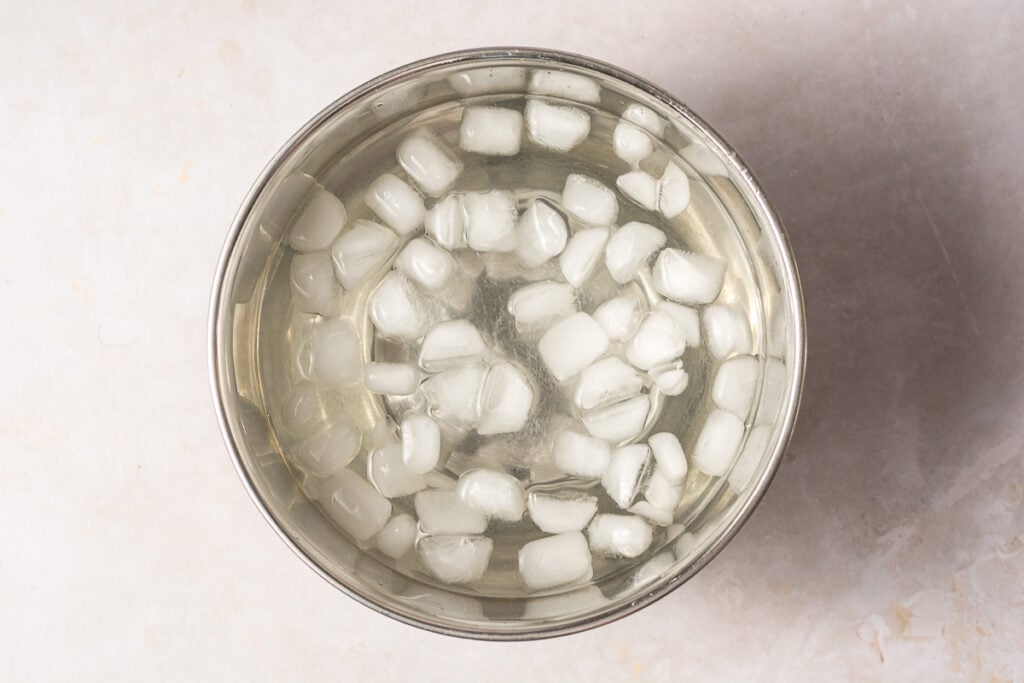
Step 2. Fill a medium pot with water and heat until small bubbles start to appear on the bottom of the pan. Immediately reduce the heat to low to keep the water hot but prevent the water from boiling. The temperature should be around 210-220°F. Boiling water is way too hot and will cook the basil leaves too quickly risking them passing the vibrant green stage and going to a more brownish or dark green. Boiling water will also destroy the flavor compounds making the basil not as potent or even bitter.
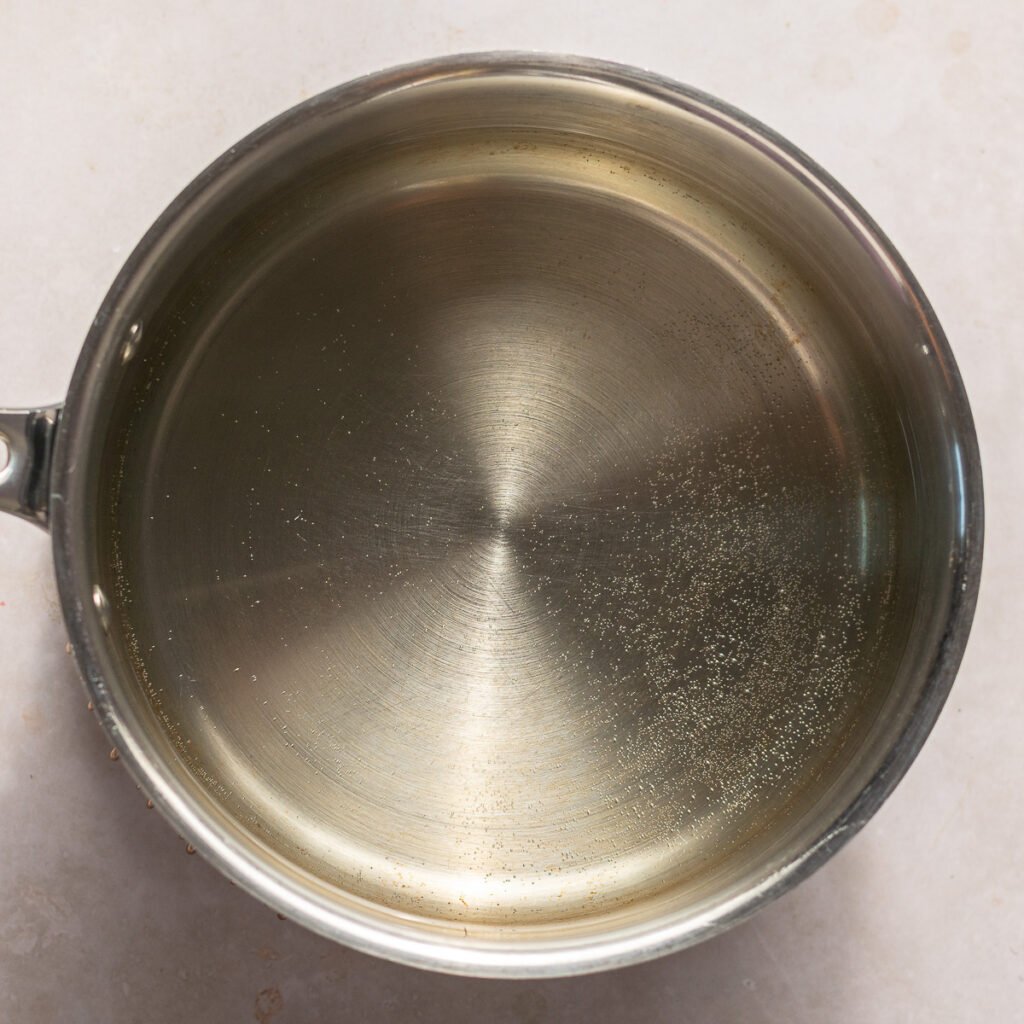
Step 3. Submerge the basil leaves in the hot water for 45 seconds to a minute until the basil has a vibrant green color. Use a sieve or a spatula to keep all the leaves submerged so they heat up evenly.
Step 4. Strain the leaves from the water by pouring the hot water/basil mixture into a fine-meshed sieve over a sink. Immediately submerge the basil (still in the sieve) in the ice bath prepared earlier. Be sure to get any basil leaves that may have stuck to the pot and to move the basil around in the sieve so all the leaves cool.
The ice bath will stop the basil leaves cooking, deactivating the enzymes responsible for discoloration in the process. This is what will give this basil pesto its vibrant green color.
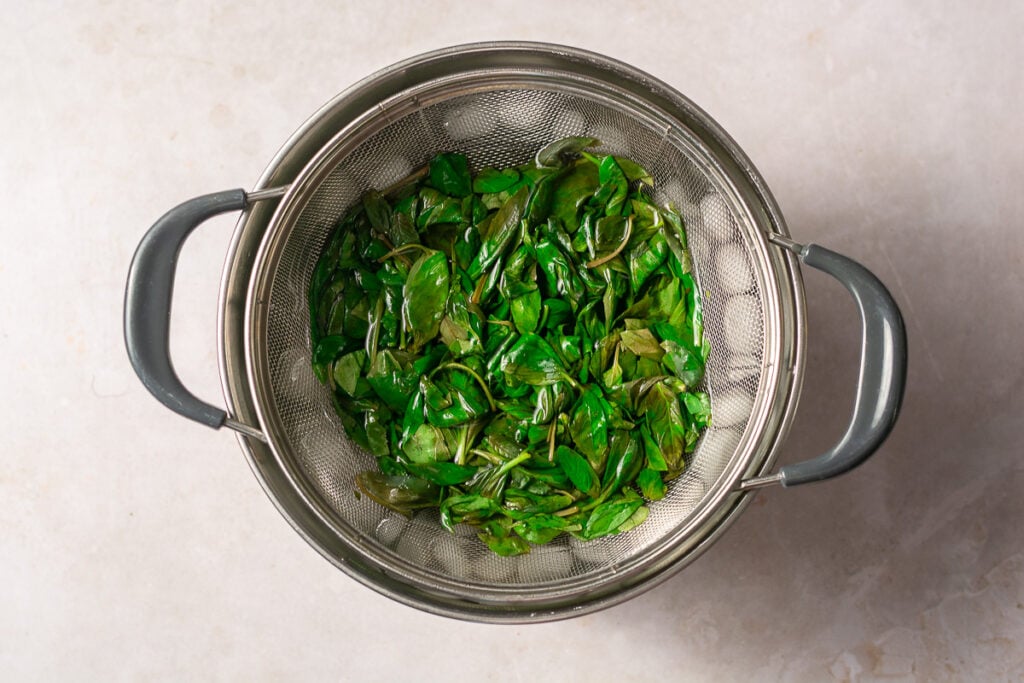
Step 5. Once the basil leaves are cold to the touch remove the sieve from the ice bath and squeeze the leaves by making a fist to release all the excess water.
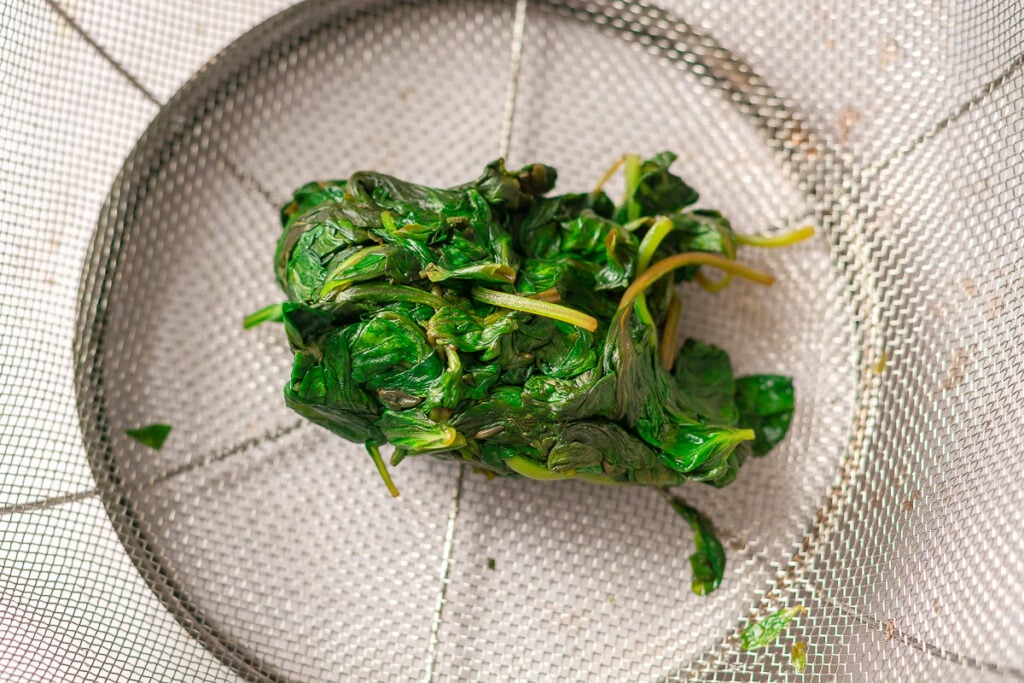
Make the Pesto
Step 1. Add the drained basil leaves, pine nuts, parmesan cheese, pecorino romano cheese, olive oil, garlic, salt and 2 of the ice cubes to a high-powered blender. Puree for 2-3 minutes until the mixture forms a paste. The basil pesto won't be smooth at this stage.
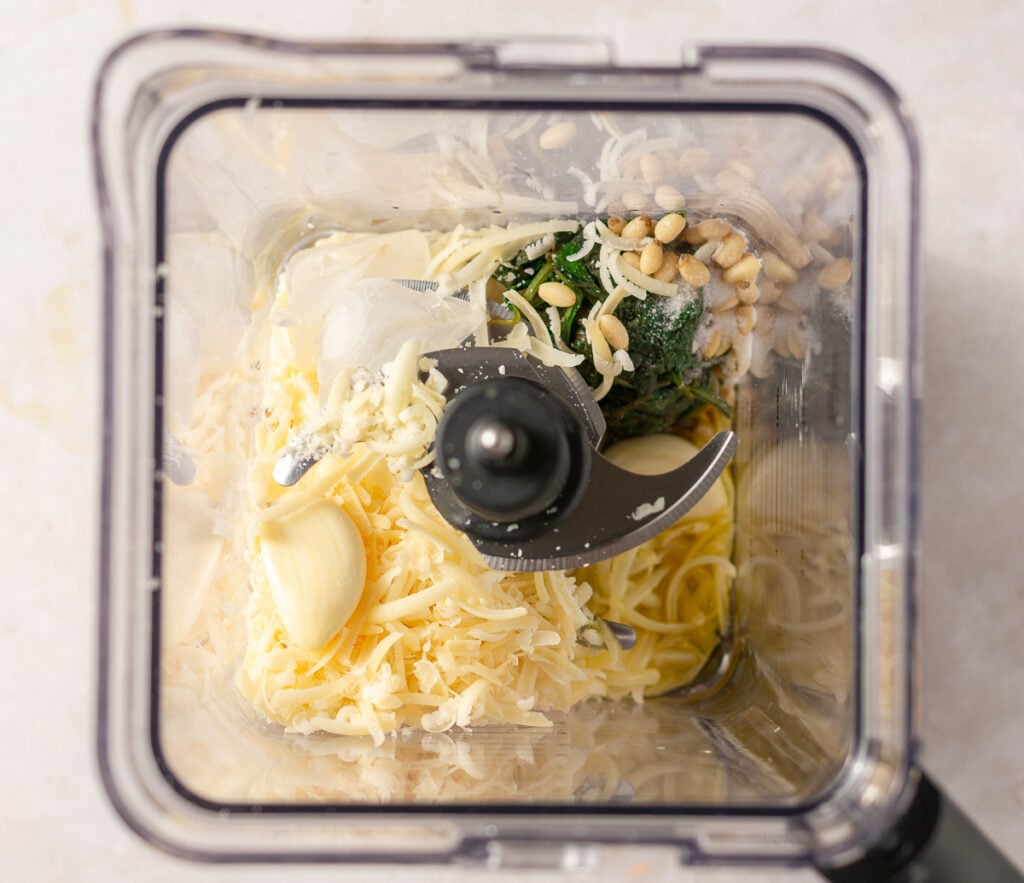
Step 2. Stop the blender to scrape down the sides, pushing any contents along the sides towards the bottom blade. This will ensure the sauce is completely smooth.
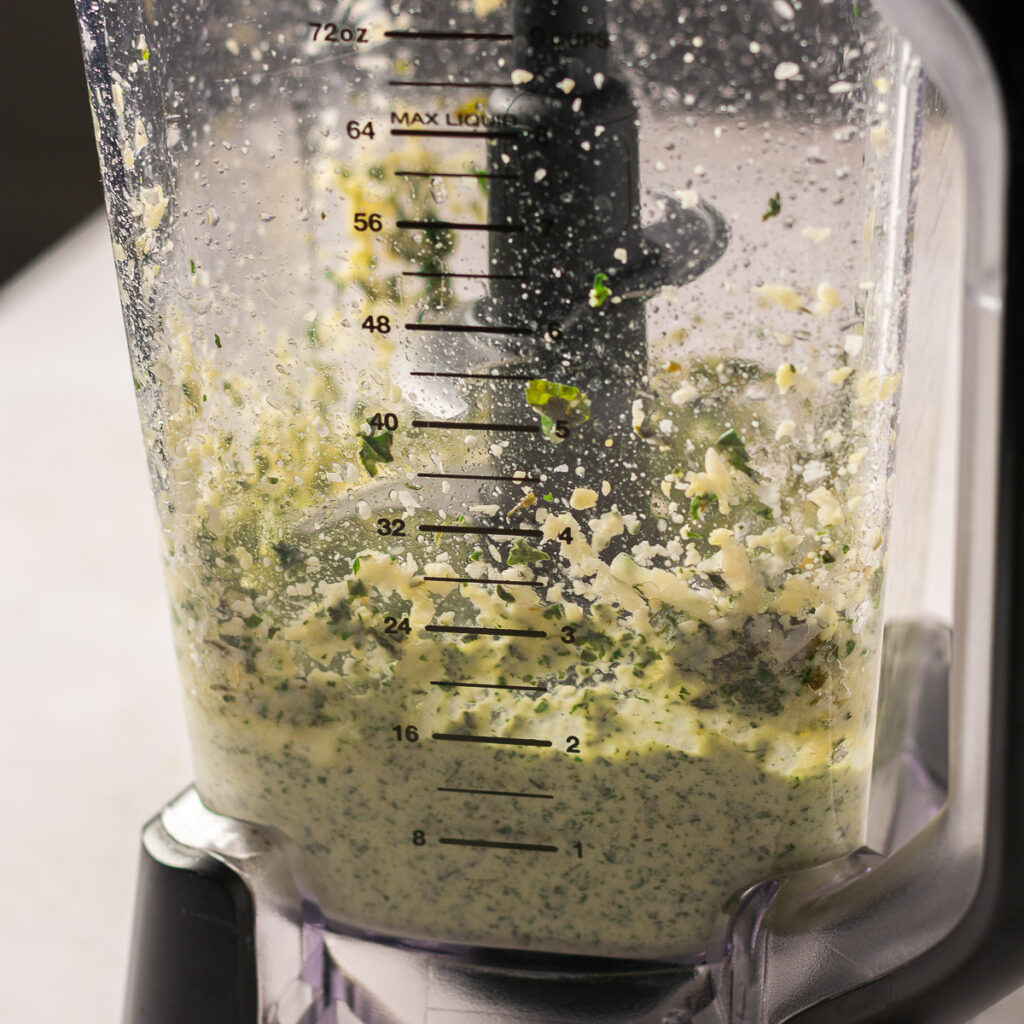
Step 3. Add another ice cube to the blender and blend for an additional 2-3 minutes until the pesto is completely smooth with a bright green color.
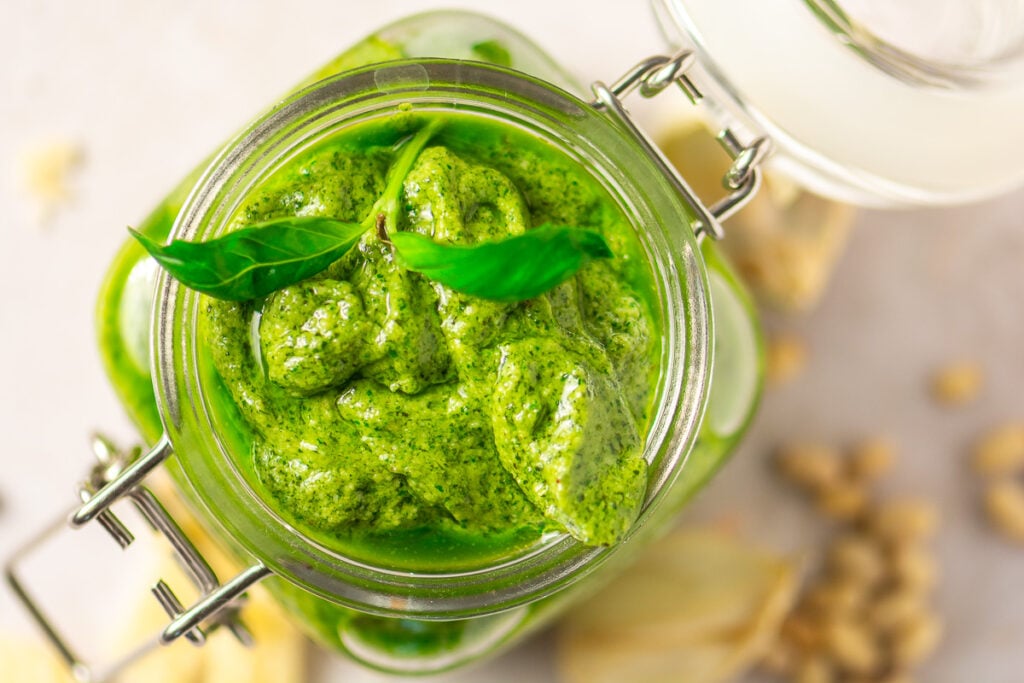
Use immediately or store in the refrigerator in an airtight container for up to 7 days.
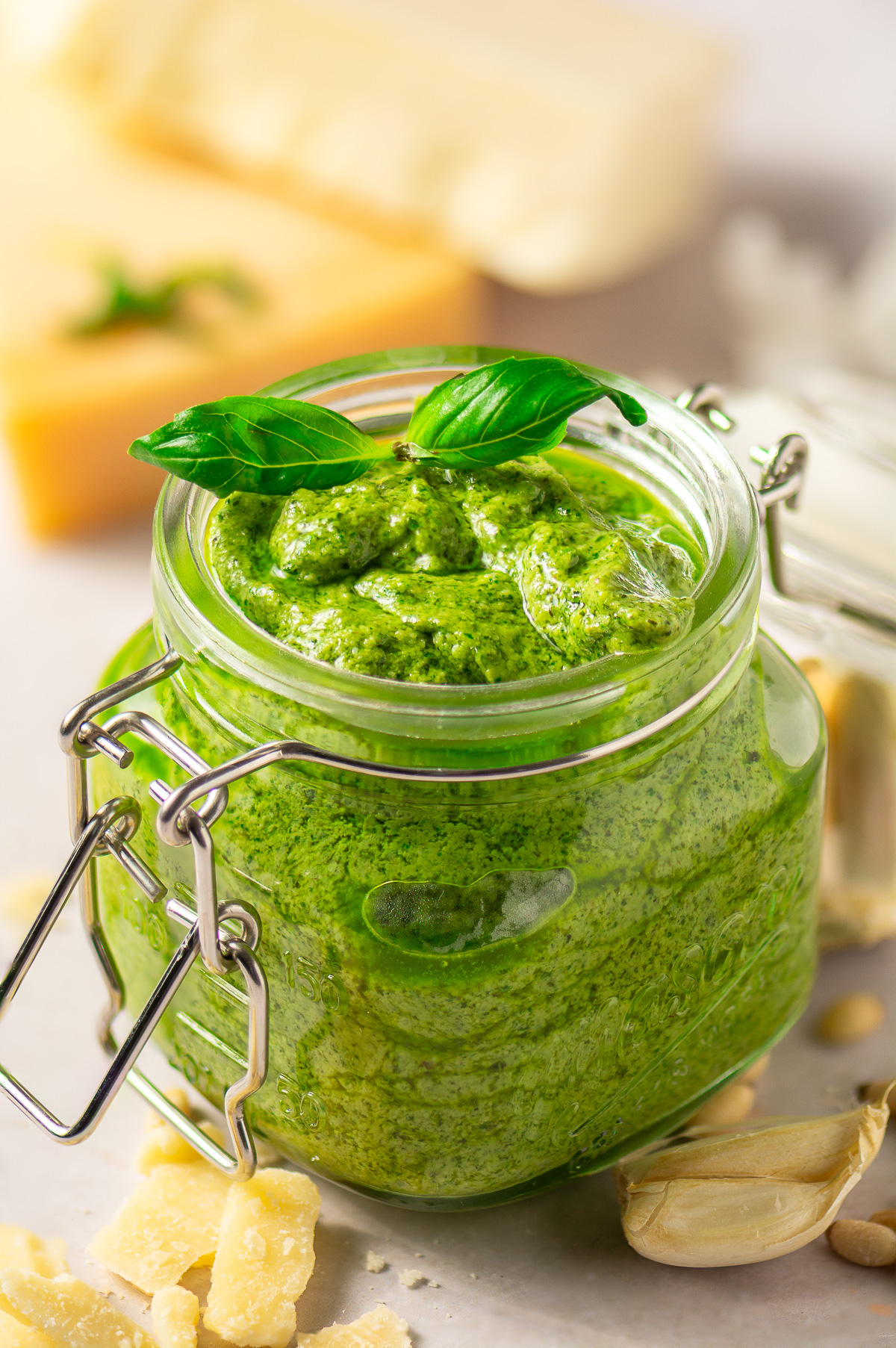
Homemade Classic Basil Pesto Recipe
Ingredients
Equipment
Method
- Prepare an ice bath to blanch the basil leaves. Fill a large bowl about a quarter of the way with ice cubes then add cold water until the bowl is about 80% full. Store in the freezer (or refrigerator) until it's time to blanch the basil.
- Fill a medium pot with water and heat until small bubbles start to appear on the bottom of the pan. Immediately reduce the heat to low to keep the water hot (but not boiling). The temperature should be around 210-220°F.
- Submerge the basil leaves in the hot water for 45 seconds to a minute until the basil has a vibrant green color. Use a sieve or a spatula to keep all the leaves submerged so they heat up evenly.
- Strain the basil leaves from the water by pouring the hot water/basil mixture into a fine-meshed sieve over a sink. Immediately submerge the basil (still in the sieve) in the ice bath prepared earlier. Move the basil around in the sieve so all the leaves cool.
- Once the basil leaves are cold to the touch remove the sieve from the ice bath and squeeze the leaves in your fist to release all the excess water.
- Add the drained basil leaves, pine nuts, parmesan cheese, pecorino romano cheese, olive oil, garlic, salt and 2 of the ice cubes to a high-powered blender. Puree for 2-3 minutes until the mixture forms a paste. The basil pesto won't be smooth at this stage. That is fine.
- Stop the blender to scrape down the sides, pushing any contents along the sides towards the bottom blade to ensure all the pesto is completely smooth.
- Add another ice cube to the blender and blend for an additional 2-3 minutes until the pesto is completely smooth with a bright green color.
- Use immediately or store in the refrigerator in an airtight container for up to 7 days.
Notes
- Blanch the basil leaves! This is the key to preserving the vibrant green color of a classic basil pesto. This pesto keeps for a 5-7 days in the refrigerator and the color is just as vibrant as day 1 thanks to blanching.
- Don't skip the ice cubes! Ice cubes aren't part of a traditional Italian pesto recipe but it will help in emulsifying the pesto. Maintaining a cool sauce during blending will prevent the fats from separating and encourage them to blend easily with the liquid released from the basil & garlic.
- Grate the cheese before blending. Grated cheese will incorporate more easily and smoothly into the pesto sauce.
